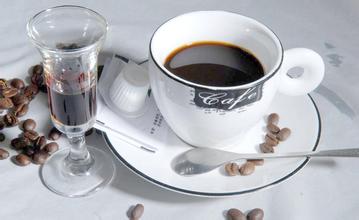What is the name of the wire ring under the powder bowl of the coffee machine? there is a leak under the Delon coffee machine.
In the Italian coffee machine, the temperature value is mainly affected by the size of the boiler or heating block, as well as good heat conduction materials, there is an obvious difference between the toy machine and the professional Italian coffee machine. In general, many standard toy machines are equipped with small boilers (below 200ml) or small heating blocks, so it is difficult to achieve a stable temperature, and the temperature fluctuates greatly in the process of coffee extraction. The machines of many small household appliance brands are like this (such as Cankun, Delong, Electrolux, etc.). After all, these brands are not professional coffee makers. Another thing to consider is a good heat conduction material, a good machine has a better circuit and pipeline design, using copper or stainless steel as the main material of the coffee machine, they have good thermal conductivity (to ensure uniform and stable temperature). Otherwise, it is still more than 90 degrees from the boiler to 70 or 80 degrees from the coffee machine, which will be more obvious in the low temperature environment.
Italian coffee machine can be said to be the most widely used coffee machine in all kinds of cafes, from single-ended to double-ended, three-headed or more. Many coffee lovers or enthusiasts even buy quasi-professional and even professional Italian coffee machines at home. The common ones in China are Rancilio Silvia,Nuova Simonelli Oscar, Expobar Offica Leva, GLY Shuttle, Delong EC155, and Cankun 1817, which is called an entry-level toy by the majority of players.
No matter how these semi-automatic machines change, there must be a handle, and this is where the extracted coffee liquid flows out. But what exactly is released in the coffee powder bowl in the hand? Many people want to see the extraction process more intuitively, and through observation to further improve their powder pressing strength, adjust the powder quantity and grinding fineness, so someone will cut off the bottom of the hand, so as to see the extraction process directly. can constantly improve the skills of coffee production.
Since we can't afford the Tuhao coffee machine, we should return to the traditional espresso machine and return to espresso's golden rule of "extracting 1 ounce (30ml) of espresso (espresso) in 25-30 seconds at 90-92 degrees Celsius under 9bar pressure."
Although this golden rule is still controversial in professional coffee forums in recent years, 9bar pressure is basically not controversial, so a bunch of coffee machines boasting 15bar or higher actually refers to the most high pressure of the coffee machine, which is of little significance, and is generally used to fool newcomers. Stable pressure and stable temperature are the criteria for measuring Italian coffee machines.
Now that you know the two most important factors of espresso (espresso), you can choose the espresso machine, all traditional espresso machines are designed around these two factors.
In the Italian coffee machine, the pressure value is mainly affected by the water pump, which is divided into the vibration pump and the rotary pump. The pressure curve of the vibration pump fluctuates, while the pressure curve of the rotary pump tends to be a straight line. Unfortunately, the machine of the rotary pump is not less than 8000 at present.

Important Notice :
前街咖啡 FrontStreet Coffee has moved to new addredd:
FrontStreet Coffee Address: 315,Donghua East Road,GuangZhou
Tel:020 38364473
- Prev

Introduction to the treatment method of Grinding degree in producing areas of three key words of hand-made Coffee
Step 1: fold the filter paper and put it into the filter cup. Hot water rinse filter paper step 2: rinse filter paper with hot water, as long as let filter paper all wet, so as to remove the smell of filter paper. (although there is only a little water to wash the filter paper, don't forget to pour it out first and then carry out the follow-up action.) Coffee powder rub a small hole step 3: pour in the coffee powder, let the powder distribute evenly, and in the middle
- Next

How to make milk foam with ordinary cup without foam machine
Coffee powder 1, red milk powder: 100ML hot water +2 spoons of milk powder, be sure to use hot water to wash the milk powder, milk cold can not play milk foam, and the amount of milk powder is not too much! 2. Pour the prepared milk powder into the manual milk cup. Do not need to pump too much when beating milk, so as to avoid too hard milk foam. About 30 times, too much pumping will lead to too hard milk foam and cannot be pulled. 3. Filter after beating milk.
Related
- Beginners will see the "Coffee pull flower" guide!
- What is the difference between ice blog purified milk and ordinary milk coffee?
- Why is the Philippines the largest producer of crops in Liberia?
- For coffee extraction, should the fine powder be retained?
- How does extracted espresso fill pressed powder? How much strength does it take to press the powder?
- How to make jasmine cold extract coffee? Is the jasmine + latte good?
- Will this little toy really make the coffee taste better? How does Lily Drip affect coffee extraction?
- Will the action of slapping the filter cup also affect coffee extraction?
- What's the difference between powder-to-water ratio and powder-to-liquid ratio?
- What is the Ethiopian local species? What does it have to do with Heirloom native species?

